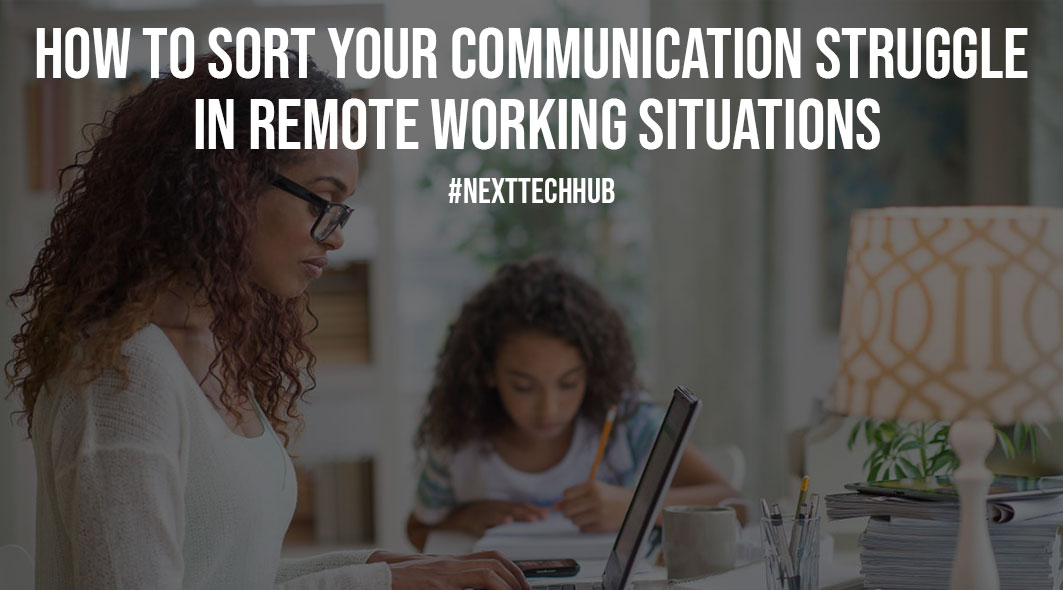Our workplaces are more than our homes, demanding more of our time and energy. With hybrid and remote working models becoming the new norm in this new era of high-tech jobs, it’s a hassle if we end up having communication problems at any end.
The pandemic brought a new world order, bringing a range of new problems whose technicalities we have yet to understand, making the transition to work from home anything but easy.

Though the general expectation is that I.T. firms fare better when it comes to those daily technological struggles, yet these communication issues are found in almost every sector that makes use of the internet. After all, just using a decent internet connection solves half of your problems.

Table of Contents
Why You Should Always Invest In A Decent Internet Connection
Whether you suffer from slow internet or basic network congestion at your end, it can be a big bummer, especially when the deadlines are starting to pile up. This is why it’s important to use an internet service that you are confident about.
While there may be times when your trusted internet service may not provide you with expected solutions. In that case, we suggest that you should keep an eye on the numerous internet service companies that are present in your vicinity.
As for our preference, we recommend Grande internet for its high-quality internet service, exceptional connectivity, and fast streaming results. What’s more, there are no hidden charges while multiple internet deals can easily be supported by the budget of your organization.
Also Read: Send Faxes on Android Phones with Free CocoFax App
Communication Struggles Can Hamper Daily Processes
Once internet connectivity issues are sorted, it is relatively easier to sort the rest of your communications conundrums, which are indefinitely an ongoing menace of every sector.
Simply put, difficulty in communication can hamper straightforward day-to-day processes. With incurring inefficiency in your collaboration with the stakeholders, projects can halt and cease altogether, if care is not taken in personnel coordination.
Rethinking Remote – In Terms of Productivity And Employee Engagement
There are countless concerns regarding employee engagement, especially in a work from home (WFH) scenario. How much is employee productivity affected in workplaces that claim to be high-tech? And how are these communications challenges being addressed? Are approaches regarding team collaborations and their link with task productivity being re-thought of?
Another reason linked with constant communication struggles was the lack of proper training for using remote tools. So when the pandemic hit, it had an impact on the way employees responded towards virtual space and remote tools because they were now on their own and had no guidance so far in pre-pandemic times.
Hence, in the post-pandemic world, organizations started realizing that new policies and a new work order must be established if productive performance is meant to be maintained for long-term goals.
Now it’s established why communication challenges must be resolved during this transient period, let’s see how we can minimize these issues at work. Despite all the positives said about remote working, it comes with a list of cons as well.
Though, remote working kept businesses alive, enabling them to weather the storm bravely as they dodged multiple lockdowns that have taken place, ever since the world has been struck by the pandemic.
But there have been times when fluctuating productivity levels hit new lows as isolation almost gobbled us up, it was remote work that’s helped to keep the spirit and our sanity alive.
Redefining Work-Life Balance
Indeed, work-life balance has been slightly off but it’s not conducive to the changes that we have learned to live with. We have probably spent more time at home than anywhere else in these past two years. And though we are struggling, we have learned to accept the new norm as well.
To make work from home effective during this age of social distancing is a complicated task, but we need to get our act together.
So how do we deal with the massive decline in communication as we utilize work from home (WFH) to protect ourselves and others during the pandemic?
Varying Response Of Varying Employee Demographics
While a strong decline was observed amongst all demographics in communication despite having so many channels, young employees felt a certain disruption in their usual productivity and engagement levels. However, there was a certain decline felt by employees in the said demographic zone when it came to the occurrence and usefulness of communication.
Another downfall that is a part of communication challenges is the limited capability of employees to work in the same physical space. As workplaces continue to transition towards the hybrid model, a decline was also seen in inter-personal collaboration amongst employees.
This is only because they got so used to working from home in a remote environment that coming back towards more public space was seen with a mix of fear and apprehension.
Also Read: Visual Search Strategies which will Work for Your Business
The Bottom Line
What is unusual about these issues is that the said limited capability has been witnessed mostly among the younger, newer work personnel.
Though the younger staff is often claimed to be the more tech-savvy one in the professional hierarchy, according to the established stereotype for the new generation, it is also important to figure out what is causing this discrepancy in the behavior of Gen-Z?
One study presents that employees in the management are usually from the senior age bracket. Since they are more keyed in on leadership roles, their stance is usually different, more solution-oriented. Hence they are already aware that abandoning communication with remote workers will make them feel even more isolated than they already are.
And so always try to be available to ensure that all issues raised by the younger staff personnel are adeptly and swiftly addressed for optimal operational performance. This has become another way of retaining employees at remote workplaces.
Younger staff though may be considered hipper but they do come with their shortcomings as well. These usually include distress and anxiety on virtual platforms with the team or in general with their colleagues.
While millennials today prefer texting as it’s more convenient and subtle in comparison to calling, it has been observed that phone calls do make these young men and women anxious, especially where phone calls are concerned.
Though direct messaging apps and remote tools have made inter-personal communication accessible, calls have been replaced by video conferences.
So the anxiety staff members felt when taking phone calls, is now felt when requested to take a video call/conference. Though senior work personnel might lack training in virtual tools, the younger lot struggled with social alienation that came with remote working. Hence collaborating with senior members made them warier.
On a final note, senior staff members constantly keep in touch with the younger members to guide them, ease worry, fear, and apprehension as they bravely sail through post-pandemic times.